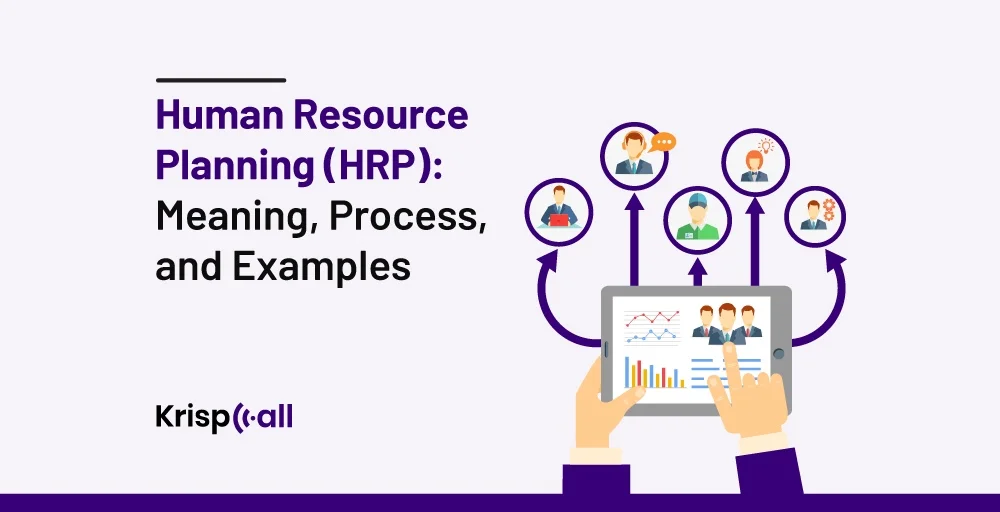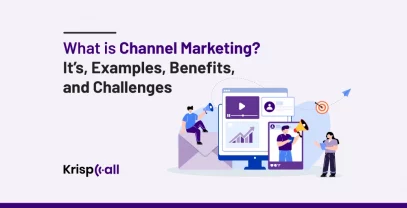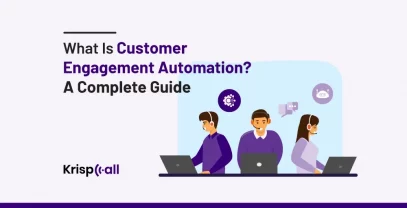Have you ever wondered why human resource planning(HRP) can be crucial in achieving productivity and longevity in a business?
Notably, according to a study by Deloitte, organizations with robust Human Resource Planning processes are 68% more likely to have higher financial performance.
However, if you understand human resource planning and its role in employee contribution and company success, you can begin strategizing a strategy aligned with HR forecasting.
In this article, we’ll explore how implementing human resource planning involves in increasing your business productivity. As well as discuss why it’s important, review some of the important steps in human resource planning. Furthermore, you can implement human resource planning in your department by getting a few tools.
What Is Human Resource Planning (HRP)?
Human resource planning (HRP) is a continuous process of predicting an organization’s future demand for and supply of human capital. In simple words, it helps to develop strategies and ensure that the right people with the right skills are available at the right time.

For instance, if you’re going to establish your software company in India. Then, utilizing HRP helps you identify the demand and supply of employees for the new office. By planning beforehand, the company is able to hire the right talent throughout its departments.
Not only this, but it also helps to retain human capital and identify skill gaps. Hence, through this process, HR leaders or managers can enhance organizational performance by analyzing market demand.
What is the importance of Human Resource Planning?
Human resources planning is important in achieving business objectives in various ways. Yet, there are many factors that play a role in achieving it. Some of them are:
Meeting organizational goals
With HRP, the organization can make sure the right team members are in the right position at the right time with the right skills. This helps the organization to achieve its strategic objectives by utilizing its own talent and expertise.
However, by aligning workforce capabilities with organizational goals, HRP helps to increase performance and productivity, which is very important.
Increases the value of current employees
In most HR plans, the focus is on reviewing the current employees. Along with training needs, it includes job titles and additional skills that make them essential to the operation of the business.
Through this approach, HR professionals can save money for employers, hire new employees, and achieve ROI by advancing their employees’ professional capabilities.
Enables companies to maintain a competitive advantage
Ever since the Covid 19, there has been a drastic change in the business environment. So, to cope with this, Human resource planning plays a crucial role. Moreover, The World Economic Forum estimates that by 2025, automation could potentially displace 85 million jobs but create 97 million new jobs.
Not to mention, it aids companies in making strategic decisions about hiring and training. By leveraging HRP, businesses can assess how technology impacts their workforce, reskill employees, and take advantage of emerging opportunities.
Promotes the growth and longevity of the company
Since the planning itself is a roadmap for any organization. It allows you to have an overview of direction. Through it, you can learn about upcoming changes that they may make and anticipate their future hiring needs.
Moreover, you can also determine the budget for potential retirements, department expansions, and additional hiring needs. By acquiring these factors, you can promote growth and make a strategic plan for the longevity of the company.
What is the objective of Human Resource Planning?
Human Resource Planning (HRP) is a comprehensive process that aims to align a business’s workforce with its strategic goals and objectives.
For its capability to forecast the future demand and supply of employees, the HRP helps to address the potential skill gaps and provides an efficient solution to bridge them through recruitment, training, and development efforts.
In essence, HRP fosters succession planning and tries to enhance employee morale and engagement among the organizations. Thereby, this can contribute to overall productivity and retention.
Types of Human Resource Planning
Human Resource Planning (HRP) can be classified into different types according to the nature of workforce management and organizational needs. Here are some common types of HRP:
Strategic HR Planning
Moving to strategic HR planning, it helps to align the HR strategies with overall organizational objectives and long-term business goals. It mainly focuses on
- anticipating future workforce needs
- identifying critical skill requirements and
- developing strategies.
Through this you can make sure that the organization has the talents they require to achieve its strategic vision.
Operational HR Planning
It is activities done on a day-to-day basis by employees. This includes workforce scheduling, workload analysis, and staffing levels.
Nevertheless, it makes sure that your company has the appropriate number and skill set of employees to meet the current operational needs.
Succession Planning
The main objective of succession planning is to identify and develop potential future leaders within an organization.
However, this might require some criteria, such as their skills and competency, as well as developing strategies to groom internal talent to assume leadership roles when needed.
Talent Management Planning
Talent management is responsible for identifying and developing the potential employees within the organization.
Thus, its main focus is to attract, retain, and develop top talent to ensure that the organization has skilled employees. So, with it, they can fulfill the organization’s critical roles, which can drive your business success.
Workforce Diversity Planning
Like every fruit in the same basket, organizations include many people from different backgrounds working together to achieve organizational goals.
That’s when workforce diversity planning comes into play, minimizing their inclusion and promoting the diversity of each.
What Is HR Planning Used For?
HR planning acts as a company’s roadmap, allowing businesses to prepare for the future and retain skilled workers. Despite that, due to its flexibility, companies can evaluate their needs and adapt to changes over the long term.
Here, by identifying a different skill set, you can accomplish your business objectives and be prepared as you move forward. So, in order to stay competitive, companies may need many technical skills or upskill their staff as the market changes.
Following that, HRP often overlooks the design of the organization, succession planning, employee motivations, and overall ROI.
Steps of Human Resource Planning

To acquire productive results, you need to have a systematic human resource planning process.
So, here we have mentioned some steps that can help you achieve your organizational goals.
1. Analyzing Current Workforce Capability
Prior to performing an HRP, assess your existing team’s skills, knowledge, accomplishments, and performance. Also, know how they can align with your business goals.
Most importantly, HR professionals should examine the strengths and weaknesses of employees. This includes
- Identifying potential skill gaps,
- evaluating the diversity and
- demographics of the workforce.
2. Predicting Future Workforce Needs
Moving onto the next steps, predicting future workforce needs is a little bit trickier than other steps. However, with the recent data and information in employers’ hands, you can efficiently forecast or predict the demand and supply of workforce requirements.
3. Balancing Employee Supply and Demand
After that, this stage involves comparing the projected workforce demand with the available supply of talent within the organization.
So, to balance the employee supply and demand, you can assess the internal talent pool by considering internal and external factors. Yet, you can also bridge any identified gaps and ensure a balanced workforce. This includes recruitment, training, outsourcing, and talent acquisition.
4. Developing and executing a plan
With all aspects clarified, you can now understand the gaps between your current human resources and company needs over the coming years. You can then apply changes within your organization.
To do so, consult with relevant authorities to determine whether additional funding or other resources are required.
Human Resource Planning Tools
Surveys
No wonder surveys are one of the most valuable tools used by organizations. Not to boast, it helps to gather valuable data or feedback from employees on the various aspects of their
- work environment
- job satisfaction,
- training needs
- career aspiration
Through these, you can address specific issues within the teams (weaknesses and strengths) and improve communications. This will also help enhance employee morale and productivity.
HR dashboards
HR dashboards are one of the tools that help you to see an overview of HR metrics. Following that, it lets you collect and display a variety of data, including
- workforce turnover rate,
- job satisfaction,
- employee productivity,
- staff skill levels,
- internal promotions and
- engagement from job candidates.
3. Performance management systems
Moving on to the performance management system, it provides a structured framework for setting goals, evaluating performance, and feedback on employee performance. It also helps to deliver performance ratings over time.
However, HR professionals and managers can use performance management systems to streamline the
- the performance appraisal process,
- Gap analysis,
- provide targeted training and
- development opportunities.
4. Human resource management systems (HRIS)
HRIS is a software solution that helps you to centralize your HR-related data and processes. These include employee information, payroll, benefits administration, and recruitment.
Nevertheless, by utilizing HRIS, senior executives can gain insight into workforce demographics. It can also be used to automate administrative tasks, streamline workflows, and improve efficiency. Some software are ADP Workforce Now, BambooHR, SAP SuccessFactors, etc.
5. Compensation and benefits analysis software
Here, the compensation and benefits analysis software helps organizations evaluate and benchmark their compensation and benefits packages against industry standards and competitors.
Furthermore, it helps to ensure that your customer would receive competitive compensation and benefits. Most importantly, it lets managers and HR professionals make designs, manage compensation programs, and conduct salary surveys.
Hence, it helps to ensure that there will be fair and equitable pay practices in organizations,
What are the Challenges of HR Planning?
The challenges to HRP involve constantly changing factors. They can be anything from getting promoted to taking a vacation or moving on to another job.
Ultimately, avoiding surpluses and shortages in the employee pool, HRP helps to ensure that roles and individuals are properly matched. However, here are some of the challenges that the manager has to face while doing HR Planning:
- Talent shortages and skills gaps where, 77% of employers globally reported difficulty filling job vacancies due to talent shortages.
- High employee turnover and retention
- Accessing data-driven decision making, where a study by Harvard Business Review found that only 22% of HR professionals feel confident in their ability to analyze workforce data.
- Limited financial resources
- Aligning HRP with overall strategic planning initiatives and organizational goals
- Resistance to Change
- Adopting advanced technology, where McKinsey estimates that by 2030, up to 375 million workers (14% of the global workforce) may need to switch occupational categories due to automation.
As a result, HRP requires a number of proactive and strategic approaches to address challenges. It is also important to collaborate across departments and levels of an organization.
Hence, by mitigating these challenges, you can optimize your workforce planning efforts and improve your organization’s future position.
Final Thoughts
Human resource planning lets every organization manage its workforce strategically. However, it allows you to analyze the business’s current capabilities, predict your future needs, and maintain supply and demand. Not to mention, it also helps you to develop actionable plans.
Nevertheless, HRP optimizes talent management. It allows for enhanced decision-making, which lets you mitigate risks efficiently.
For every organization, it demonstrates how HR planning drives sustainable growth, maintains competitiveness, and ensures compliance. So as of today embrace HRP strategy so that you can know your workforce’s full potential and foster innovations so that you can easily adapt in this dynamic business environment.
FAQ
What is the difference between hard and soft human resource planning?
The difference between hard and soft human resource planning are
| Features | Hard HRP | Soft HRP |
| Focus | Meeting specific staffing needs and controlling costs. | Aims to build a loyal and productive workforce. |
| Metrics | Relies heavily on quantifiable data like turnover rates, headcount, budgets, | Doesn’t rely on specific metrics. Focuses on qualitative aspects like employee satisfaction, engagement surveys |
| Approach | Data-driven and rule-based. | Relationship-based and collaborative. |
What are the basic steps in HR planning?
Some of the basic steps in order to make an effective HR planning are:
- Access current workforce
- Forecast future needs
- Identify gaps
- Develop action plans
- Implement and monitor
- Review and evaluate





